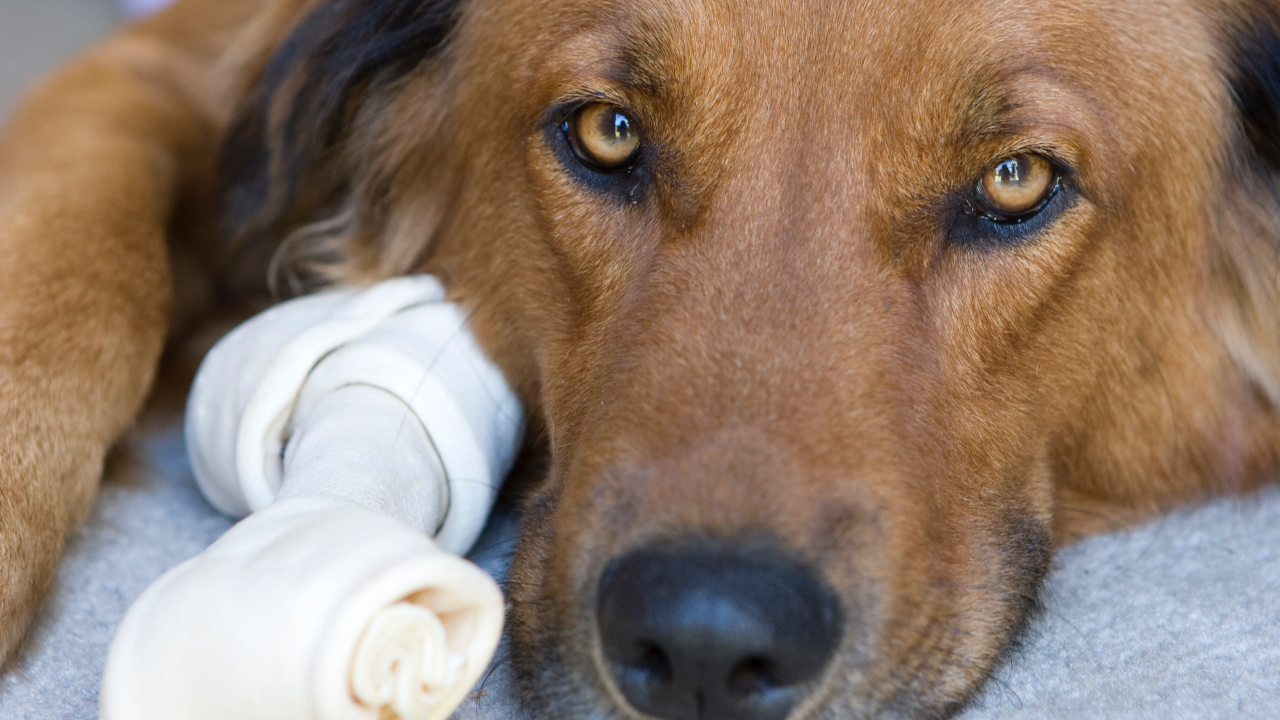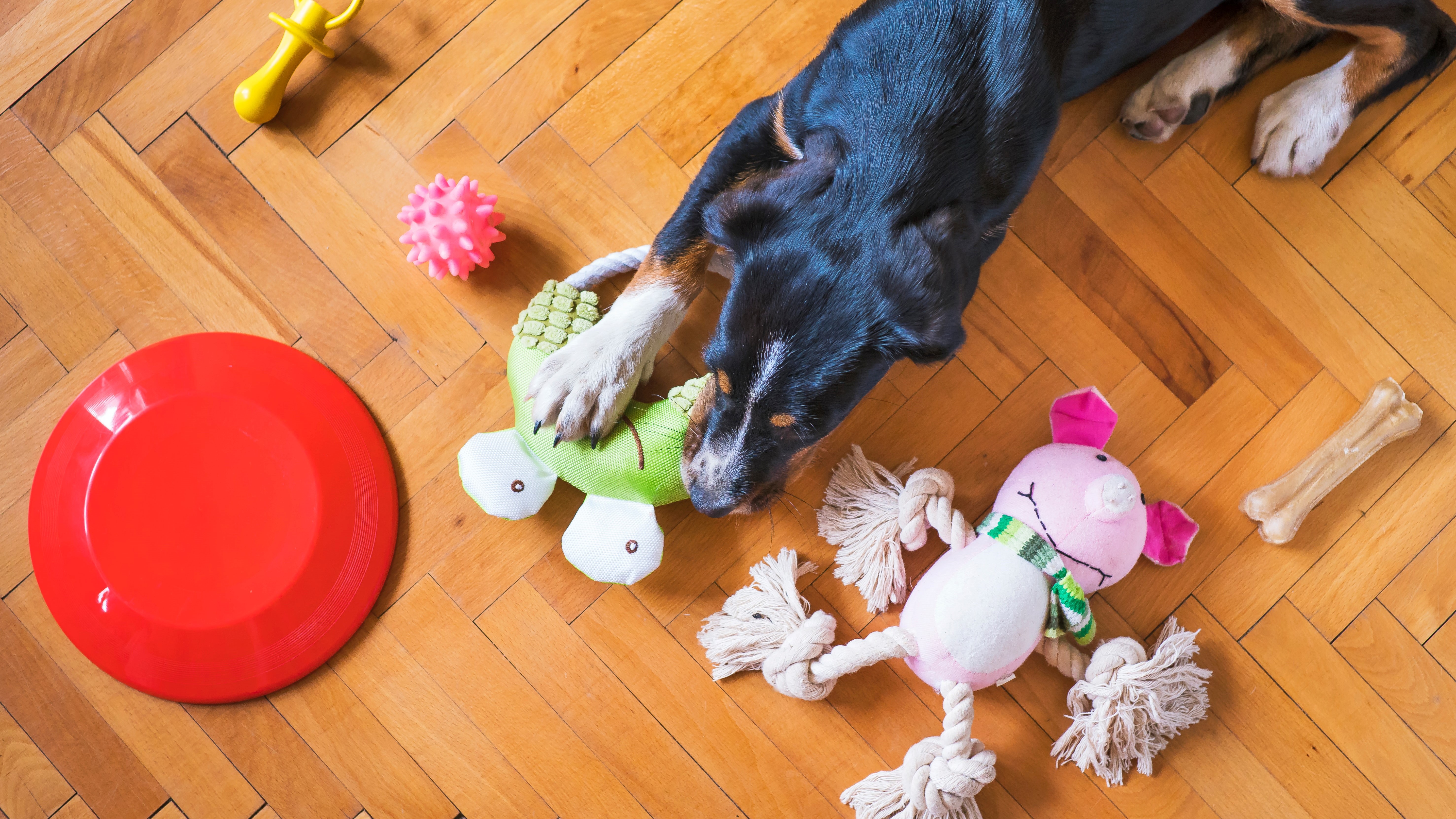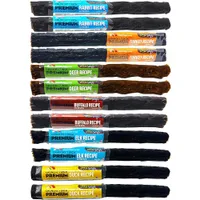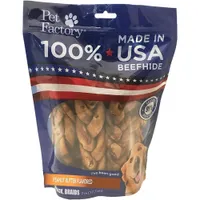Rawhide vs beefhide: We asked a vet what the difference is
In the rawhide vs beefhide debate, our vet looks at why you should – and shouldn’t – give either as a treat

It’s the battle between rawhide vs beefhide with the burning question: which is the healthier option for your dog? As you’re about to discover, both have advantages and disadvantages from a nutritional and even mental health point of view. There are also issues surrounding how often dogs should consume these products and what you should watch out for when your pet is eating them.
You’d be forgiven, if like us, you were initially confused about the difference between rawhide and beefhide. That’s why we’ve enlisted some expert help from a vet to give us some answers. If you normally give your pooch the longest lasting dog chews but aren’t exactly sure what’s in them, then look no further.
At the same time, you’ll become more aware of the potential choking and obstruction hazards posed by these otherwise natural, flavorsome treats. And you’ll get to grips with the dangers they can pose to teeth. So check out this guide by expert vet Dr. Elizabeth Racine who outlines everything you need to know about rawhide vs beefhide, including the pros, cons and safer alternatives.
What is rawhide?
So let’s start by addressing what rawhide is. As the name suggests, it’s raw animal hide (animal skin) – typically beef, pork, buffalo and horse – that has been processed into a chew treat for dogs. Usually sold in strips or sheets, and made into twists, braids and other shapes with added flavor, it’s tasty, long-lasting, and stimulating to chew. Some rawhide products are sold as whole pieces, such as pig ears or bully sticks (beef pizzles).
Etta Says Premium Rawhide Chews | Amazon
This 12-pack of rawhide chews includes duck, elk, buffalo, deer, turkey and rabbit.
Rawhide vs beefhide: What's the difference?
So that’s rawhide. What’s beefhide? Well, all beefhide products are rawhide, but not all rawhide products are beefhide. It’s not as confusing as it sounds. Rawhide can be made from any animal hide, or even a combination of hides. Beefhide, on the other hand, is specifically made from cow hides. Rawhides and beefhides are both made in exactly the same way.
Manufacturers of rawhide chew treats are not required to list the source of the hide on the treat label. Therefore, some pet owners feel more comfortable purchasing beefhide treats so they know exactly what type of hide they are getting. However, it’s important to note that beefhide is a rawhide product, and has all the same pros and cons as any other rawhide treat for dogs.

Pros of rawhide products
In that sense then, when we discuss the advantages and disadvantages of rawhide products, we’re also covering the advantages and disadvantages of beefhide products. Taking the pros to start with, though, you’ll find that both are great to give to dogs simply because they love them. They’re flavorful, satisfy a dog’s natural inclination to chew, and can help alleviate boredom. Rawhides also tend to last longer than other treats, so they can be used to keep your dog busy and provide mental stimulation.
Get the best advice, tips and top tech for your beloved Pets
Some rawhide treats are treated with enzymes to break down plaque and tartar, which can help improve your dog’s dental health. It’s important to note, however, that this is not a substitute for daily brushing. No treat will be quite as effective as a toothbrush for oral health!
Cons of rawhide products
Is rawhide bad for dogs? And what are the drawbacks? Well, many dogs experience digestive upset, such as vomiting and diarrhea after eating rawhide treats.
Swallowing large chunks of rawhide can also pose a choking hazard or obstruct the digestive tract, requiring emergency veterinary care.
Hard rawhide chews may cause fractured teeth or damaged enamel, requiring general anesthesia and professional veterinary dentistry to address the problem. Rawhide treats are also a significant source of calories, which can contribute to weight gain and obesity.
Pet Factory Braided Beefhide Sticks | Amazon
Available in a variety of flavors, these braided sticks are made of beefhide.
Can rawhide only make dogs ill?
No, it can have an effect on you too. According to a study in the Canadian Veterinary Journal, rawhide treats can be contaminated with bacteria such as Salmonella, E. coli, methicillin-resistant Staphylococcus aureus (MRSA), and Clostridium difficile (C. diff).
These pathogens can not only make your dog sick, but, as reported in the Journal of Clinical Microbiology, they have also been associated with illness in pet owners handling contaminated rawhide treats.
These findings are particularly concerning for households with young, elderly, or immunocompromised family members who may be more susceptible to such infections.

My dog got sick from rawhide – What should I do?
If your dog is sick after eating rawhide treats, remove any remaining rawhide and place them out of your dog’s reach. Most dogs becoming ill after eating rawhide show symptoms of digestive upset such as vomiting, diarrhea, and loss of appetite. In most cases, symptoms should resolve within 24–48 hours of stopping the rawhide treats.
If the symptoms don’t resolve within 24–48 hours, or your dog has other signs (such as lethargy or abdominal pain), seek veterinary care. Your vet will perform a full physical examination and may recommend additional testing, such as abdominal radiographs (x-rays) to ensure the rawhide has not caused a bowel obstruction or evaluation of a fecal sample to rule out parasites as the cause for your dog’s symptoms.
Your vet may also prescribe medication to treat your dog’s nausea and diarrhea symptomatically. In most cases, your dog will be feeling better within a few days with treatment.

What are the best alternatives to rawhide?
Although rawhide can help keep your dog occupied, it may worsen behavior problems in some canines. It can lead to resource guarding in dogs, exhibited with growling, snapping, or trying to keep treats away from other dogs or people.
If this happens, limit your dog’s access to chews. Instead, give treats that can be immediately consumed so that your dog will not be inclined to guard them and look for alternatives to rawhide that also satisfy their need for chewing and mental stimulation.
For example, you can fill one of the best dog puzzle toys or slow feeder with your dog’s favorite treats or kibble to keep him occupied. You can also learn how to use Kong toys designed to dispense treats. Some dogs even enjoy crunching on frozen carrots or celery sticks.
For dogs that prefer more traditional treats, however, look for products labeled with the Veterinary Oral Health Council (VOHC) seal, which ensures that the treat will prevent plaque and tartar formation. These treats provide dental health benefits in addition to satisfying your dog’s treat cravings.
How often can dogs eat rawhide?
Limit your dog’s intake of rawhide to no more than a few times per week. Too much rawhide may give your dog an upset stomach and cause gastrointestinal issues such as vomiting, diarrhea, bloating, and flatulence. Save rawhide as a fun treat for your dog.
Rawhide should only be given under direct supervision, to minimize the risk of choking and other hazards. Take rawhide away from your dog when it becomes small enough for your dog to swallow.
How much rawhide can I feed my dog?
Make sure the rawhide you feed is appropriately sized for your dog. If rawhide is bigger than your dog, then it’s too big! On the other hand, rawhide that is small enough for your dog to swallow is also dangerous because this can cause choking or an intestinal obstruction, requiring expensive emergency surgery to fix.
Remember, rawhide contains calories and can cause weight gain if fed in large amounts. Treats, table scraps, and chews – including rawhide – should make up no more than 10% of your dog’s daily calorie intake. If you can’t find calorie information on the rawhide packaging, try contacting the manufacturer to find out how many calories there are in each rawhide treat.
Many dogs chew rawhide treats throughout their entire lives without a problem, so it’s tough to claim that all rawhide treats are bad for all dogs. However, rawhide and beefhide treats do carry significant risks and it’s important to be aware of the tradeoffs involved in giving your dog rawhide.
If you decide to feed your dog rawhide or beefhide, make sure you supervise your dog closely to ensure he doesn’t swallow any large pieces. If your dog develops any health concerns, like digestive upset or dental problems, consult your veterinarian and consider switching to one of the alternative treat options discussed above. With so many fun and tasty chews and treats on the market, you’re sure to find something your dog will love!
Enjoyed this piece and keen to learn more about what chews might be suitable for your canine companion? Then be sure to check out our vet's guide to safe dog chews for aggressive chewers. Or, read if rawhide bones good for dogs and what bully sticks are made of

Dr Racine graduated from the University of New Hampshire in 2012 with a degree in animal science. She went on to study at the Atlantic Veterinary College where she became a doctor of veterinary medicine. Dr Racine has a keen interest in veterinary behavior, nutrition, and internal medicine. In her free time, she enjoys playing trampoline dodgeball, hiking with her beagle Dasher, and spending time with her three mischievous cats.
Dr. Elizabeth Racine is a small animal general practice vet covering all things pet health and wellness. Her special interests include veterinary behavior, nutrition, and internal medicine.
As a freelance writer, Dr. Racine has written content for major companies in the industry such as the American Kennel Club, Merck Animal Health, Bayer PetBasics, Elanco, and CareCredit. In her free time, Dr. Racine enjoys playing trampoline dodgeball, hiking with her beagle Dasher, and spending time with her three mischievous cats.


